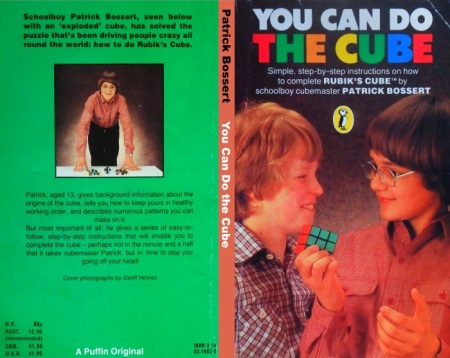RUBIK’S CUBE
It was June 5, 1982 in Budapest when a sixteen year old Minh Thai was crowned the first World Champion Speed-cuber. In the toy and gaming industry, this was a revolution. It took him 22.95 seconds to claim the title. Rubik’s cube had gained notoriety as an unsolvable puzzle which added to its popularity.
Ernő Rubik, a professor of architecture and design, wanted to create an object that would serve as an illustration of spatial relationships in 3D to his students. He created what would become the biggest selling toy of all time. He was so pleased with his design that he fondly called it the Magic Cube, because it made magic with its twists and turns while remaining intact.
The Cube was officially launched in 1980, after a string of successes at International Toy Fairs. It was designed in 1974 at Hungary, but before the Magic Cube, Rubik first designed the Pyraminx in 1970, which didn’t take off at the time, only to build on the success of the Magic Cube, years later. It took Rubik over a month to solve his own puzzle, something that caught the attention of mathematicians. Who, after months and months of studying this new phenomenon, came up with a conclusion that a 3x3x3 cube has over 43 quintillion algorithms. They then went on to test how many algorithms it would take to solve the puzzle, from any combination. The number is 20, and to the surprise of industry peers, they called this number – God’s number. The other 43 quintillion is called, as you may have guessed, the Devil’s number.
Besides Speed-Cubing, which changed the gaming and toy culture, Rubik’s Cube is a work of art. An educational toy, with a cool element to it, almost like the iPhone of toys. It has made its way into movies, cartoons, music videos, and almost all gaming and toy events. Rubik was once asked what the toy represents in general, chaos and order, he said in response. Mathematicians have called the Rubik’s Cube a permutation group. It is a puzzle.

CULTURE
After the first World Speed-cubing Championship in 1982, which was attended by only 19 people, the Cube’s craze faded as quickly as it started, this was due to the start of the internet revolution. The culture of speed-cubing events was literally dead, but the online community was slowly growing and speed-cubers found each other. Twenty years later, Rob van Bruchem and Tyson Mao, two of the avid speed-cubers from the first generation, brought people together. Later co-founding the World Cube Association, which to date, regulates speed-cubing competitions. This revival sparked a new wave of organized speed-cubing events, both national and international.
There were twelve events organized in 2004, fifty eight more between 2005 and 2006, over eight hundred and eighty the following year, with over a hundred in 2008. Since then, more and more competitions take place every year. The current World Speedcuber is Australian Feliks Zemdegs who completed the Cube in 4.22 seconds.

PATRICK BOSSERT
One thing that made the Rubik’s Cube popular was how difficult it was to solve. Patrick Bossert was on a skiing holiday in Switzerland when he broke his arm. The unfortunate incident forced him to take some time off and rest in his chalet for two weeks. At the time, the Rubik’s Cube had just hit the Switzerland market, and his cousin thought it would be a good idea to get him one to pass the time, while resting in the chalet. Patrick didn’t have much choice but to rest and maybe try solve the Magic Puzzle.
He did. When he got back home in the United Kingdom, the Cube had just arrived in the market. He became one of the youngest people to solve the Cube, at age 12. He made tutorials on how to solve the puzzle, and sold them for 30 pennies at his school. This soon became a very profitable business, and extended to other schools. In 1981, before the Speed-Cubing competitions, the word quickly spread out. The same year he ended up publishing a book entitled “You Can Do The Cube” which went on to sell over 1,5 million copies. Not a bad adventure for a 12 year old.
RECORDS
Since then, a number of records have been set. From odd to downright crazy:
Kevin Hays – solved 8 cubes under water with a single breath.
Blair Williamson – solved 254 cubes while running a marathon.
Erick Limeback – solved 5,800 cubes in 24 hours.
Teo Kai Xiang – solved 3 cubes in less than 5 minutes while also juggling them.
Roman Strakhov – solved a 9x9x9 cube while blindfolded.
Chris Walker – solved a 3x3x3 cube while skydiving.
THE FUTURE
The Cube remains the biggest selling toy of all time. Ernő Rubik: I believe probably the most characteristic part of the cube is the contradiction between simplicity and complexity. I love the simplicity of the cube because it’s a very clear geometrical shape, and I love geometry because it’s the study of how the whole universe is structured.
The Cube lives on…

